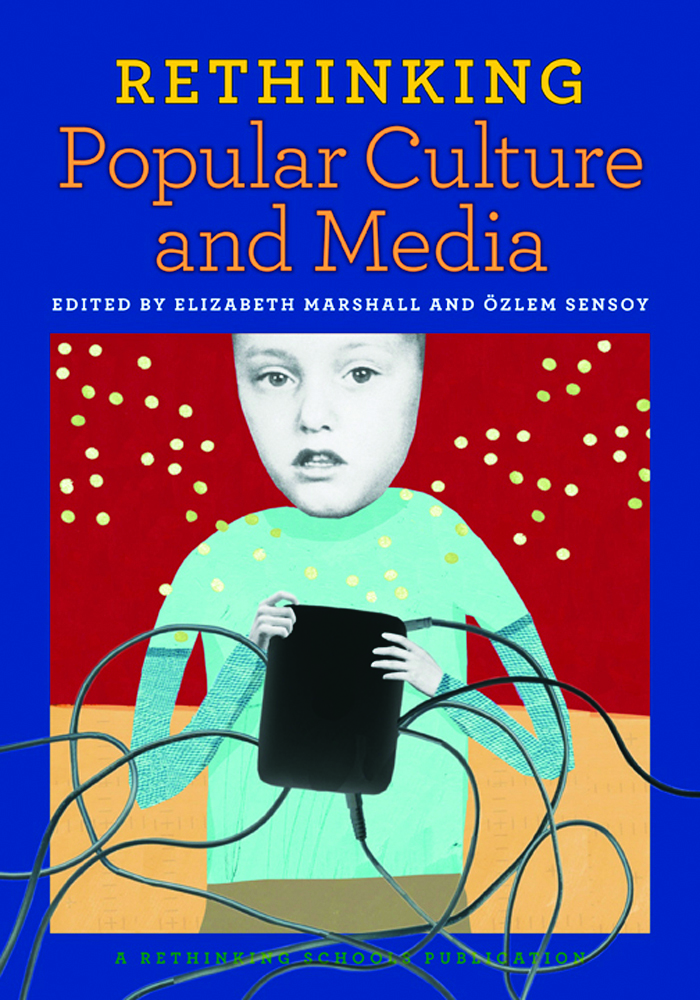As the Center for a Commercial-Free Childhood (CCFC) points out, preschool children spend “an astonishing average of 32 hours a week” in front of screens—and it’s more for older children. CCFC writes, “Excessive screen time is harmful for children—it’s linked to poor school performance, childhood obesity, attention problems, and the erosion of creative play. Children who are more immersed in commercial culture are also less generous with peers and exhibit fewer positive environmental behaviors.”
 April 30-May 6, 2012 is Screen-Free Week, an annual celebration presented by CCFC to “turn off screens and turn on life.” The CCFC gives life to this important campaign every year with an excellent organizer’s kit. We recommend this resource in our spring 2012 issue.
April 30-May 6, 2012 is Screen-Free Week, an annual celebration presented by CCFC to “turn off screens and turn on life.” The CCFC gives life to this important campaign every year with an excellent organizer’s kit. We recommend this resource in our spring 2012 issue.
You will also find some great tips in “Coping with TV: Some Lesson Ideas” by Bob Peterson, reprinted below. This excellent essay was included in the book we published last year, Rethinking Popular Culture and Media, edited by Elizabeth Marshall and Özlem Sensoy.
Please share in the comments what you’re doing in your classrooms or at home to celebrate Screen-Free Week.
Coping with TV: Some Lesson Ideas
One thousand and ninety-five hours!” Elizabeth shook her head in disbelief as she announced to the class the amount of time she would “have for herself” each year if she reduced her TV watching from five to two hours a day.
“That’s over 45 days of time!” added Dennis, as he quickly figured it out on the calculator. The class brainstormed what a kid could do with that much time—learn to juggle or to play a musical instrument, read scores of books, write his or her own book, get good at a sport.
Of course, several in the class proudly proclaimed that if they had that much extra time, they’d do what they liked best to do—watch TV.
For years I chose to ignore TV, on the one hand blaming it for many of my students’ problems, but on the other feeling it was beyond my control. Yet I came to realize that because of TV’s negative impact on children, we must teach children how to cope with television. At La Escuela Fratney, the kindergarten through 5th grade school where I teach, the staff decided to tackle the problem head-on and sponsor an annual No-TV Week. Our goal was not only to decrease the amount of TV students watch, but also to increase their skills in critically analyzing television and other media.
Limiting the Habit
Statistics can be helpful. According to Nielsen Inc., children watch on average about 24 to 28 hours of television per week. The average 5-year-old will have spent 5,000 hours in front of the TV before entering kindergarten, more time than he or she will spend in conversation with his or her parents for the rest of their lives and longer than it would take to get a college degree.
 Part of Fratney’s success at reducing kids’ TV watching was because we worked closely with our students’ families. No-TV Week is not aimed just at students and staff but also at family members. During the week, everyone—staff, students, and family members—are asked to voluntarily pledge not to watch TV.
Part of Fratney’s success at reducing kids’ TV watching was because we worked closely with our students’ families. No-TV Week is not aimed just at students and staff but also at family members. During the week, everyone—staff, students, and family members—are asked to voluntarily pledge not to watch TV.
To prepare students for the week, teachers try to raise the students’ awareness of how much time they spend watching television. Students keep a weeklong log of the TV they watch, including the names and times of the programs.
Some of the teachers then have each child tabulate the number of hours they watched TV, making comparisons and reflecting on the differences. Some classes rank their favorite shows and discuss why they are popular. For older students, the No-TV Week can be tied to math lessons. The students figure out the average hours of TV watched daily, weekly, annually, or from the time they were 5 years old to age 18.
Some classes prepare “No-TV Week Survival Kits” with alternative home activities such as playing games, going on a bicycle ride, making cookies, or reading a book. One year my class coordinated a schoolwide campaign to come up with 500 things to do instead of watching TV. Another year my 5th graders went to each class and surveyed the students about the types of media/communication devices in their homes—from TVs to computers, from phones to video games. They tallied the data, figured out the percentages, and made bar graphs to display the survey’s results.
Because many children have difficulty conceptualizing “life before TV,” I have children interview a family member or friend who grew up without television. Questions include: How did your life change after you got a television set? What did you do instead of watching TV?
Parent response to No-TV Week has ranged from wildly enthusiastic, to highly supportive, to nonchalant. Although most of the families fall in the middle, there are a number who tell wonderful stories about how the week forced them to reconsider their television habits.
One parent, for example, explained how previously her family had always watched TV during dinner. Although she didn’t like the habit, she wasn’t sure how to change it. After the No-TV Week, she said, she felt confident enough to ban the television during dinner and call for family conversation instead. Another parent said that after the week, she started a practice of telling her kids at breakfast several times a week that it would be a No-TV Day. A third parent said her children even ask for No-TV evenings because they like to play games with Mom and Dad.
Critique
After the first No-TV week, parents suggested we put more emphasis on helping children critique and analyze television. They were concerned not only about the shows but also about the commercials.
The teachers started by focusing on commercials. On the average, children see 20,000 TV commercials a year—more than 350,000 by the time they are 18, according to Action for Children’s Television. One of my homework assignments asks students to “Add up the Ads” and to keep track of all the TV ads they see in one night—both the number and the minutes. This gives the children an understanding of how commercials saturate our lives and gets them to begin thinking how the television industry rests on advertising dollars.
For one lesson plan on commercials, teachers videotaped certain commercials and later watched them with their students. Teachers posed the question “What messages are sent by the commercial and why?” They also explained the difference between implicit and explicit messages. After watching and discussing various commercials, students wrote about the ads’ explicit and implicit messages. As Maria noted, “You seem to be always happy if you eat that cereal.” John concluded: “There always are pretty ladies next to new cars. It must be so men come in to look at them.”
TV shows can be critiqued in the same way. I have recorded segments of cartoons and sitcoms to show in class. We analyze the messages and ask: How are problems solved? Who does most of the talking? What race, gender, and age are the characters in the shows—or commercials? How many instances of violence does one observe? How many put-downs are there? As a follow-up homework assignment, students interview a family member about the positive and negative messages of TV shows. One parent answered, “Children tend to believe that violence is the way to solve problems, like in violent TV shows.” Another responded, “TV has a bad effect because it absorbs much of the brain.”
How much of our kids’ brains TV will “absorb” is an open question. But media literacy projects like our No-TV Week present the question for discussion and allow collective reflection on one of the most powerful influences on our children’s lives.
Related Resources
 This anthology includes outstanding articles by elementary and secondary public school teachers, scholars, and activists who examine how and what popular toys, books, films, music, and other media “teach.” These thoughtful essays offer strong conceptual critiques and practical pedagogical strategies for educators at every level to engage with the popular.
This anthology includes outstanding articles by elementary and secondary public school teachers, scholars, and activists who examine how and what popular toys, books, films, music, and other media “teach.” These thoughtful essays offer strong conceptual critiques and practical pedagogical strategies for educators at every level to engage with the popular.
Power Down for Screen-Free Week
by Elizabeth Marshall and Özlem Sensoy, April 2011, The Vancouver Sun
Schlock Proof Your Child: Three ways to help kids build critical minds, their best defence against bad media.
by Özlem Sensoy, June 2011, The Tyee
